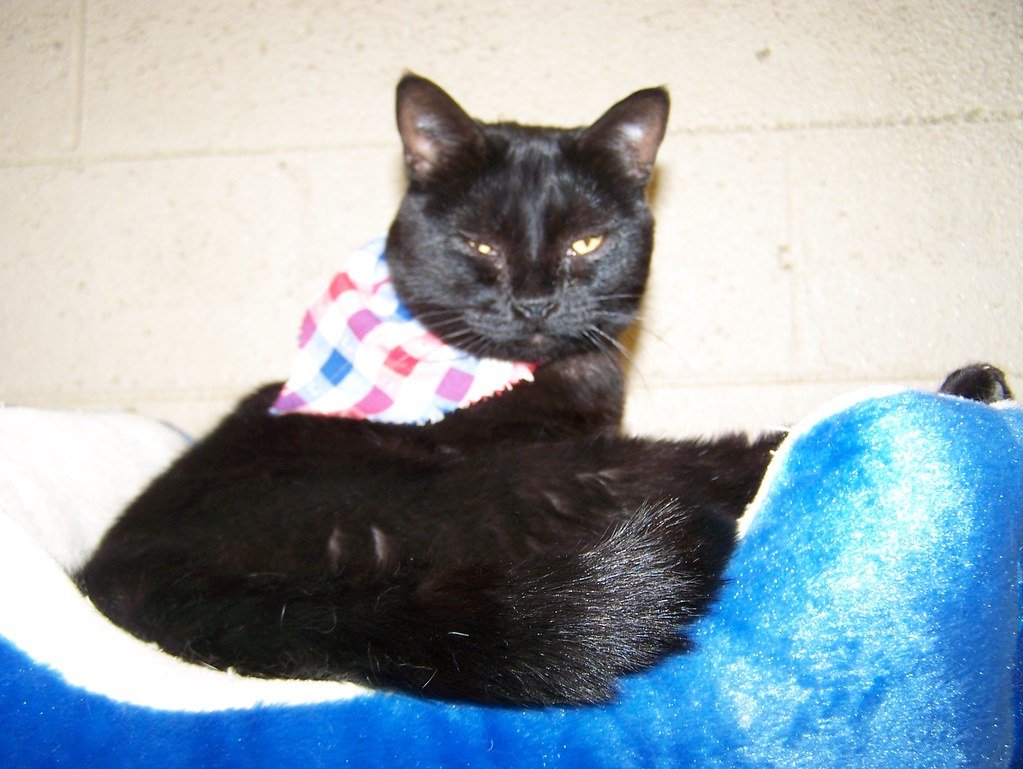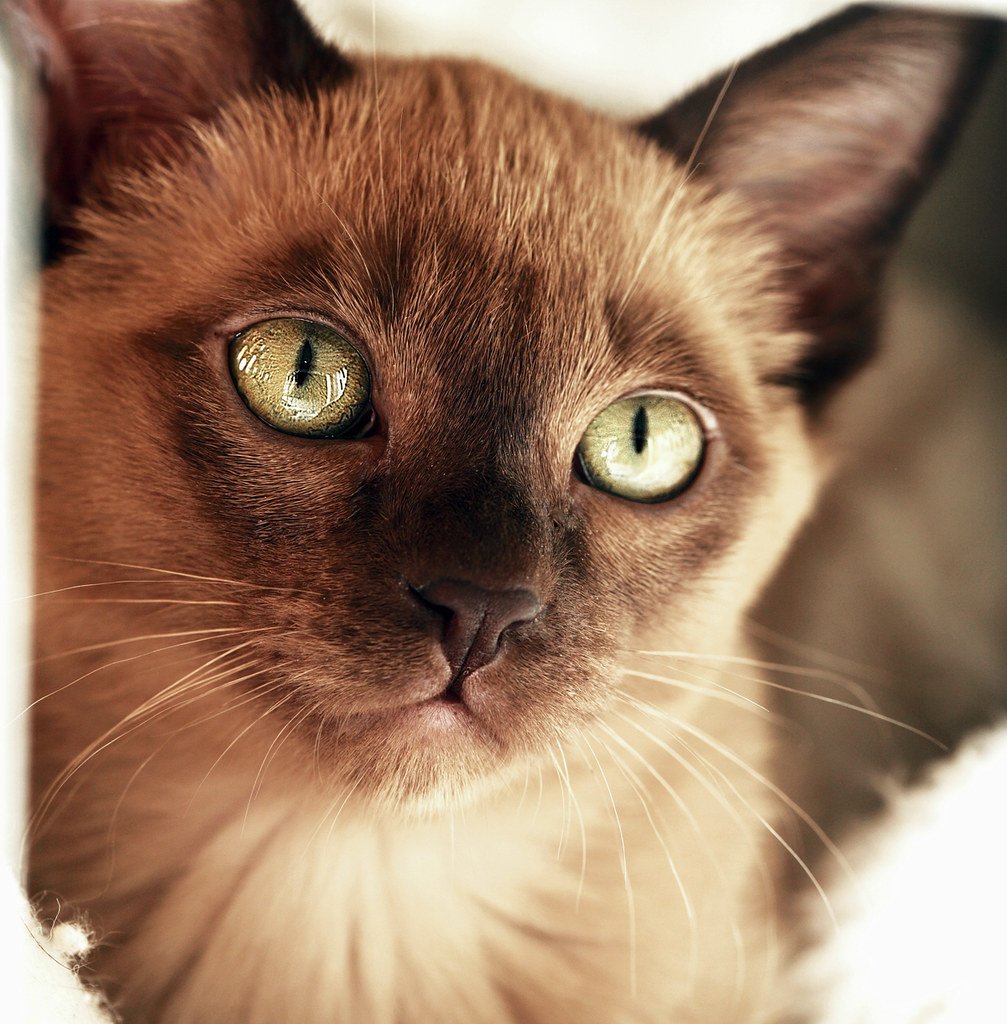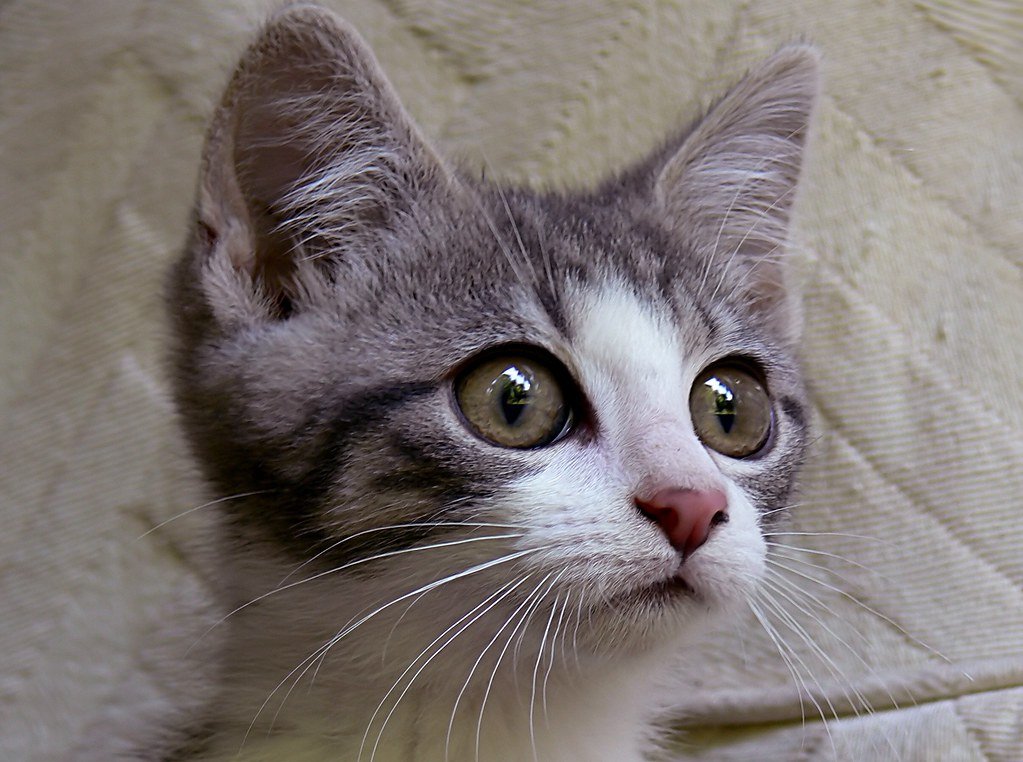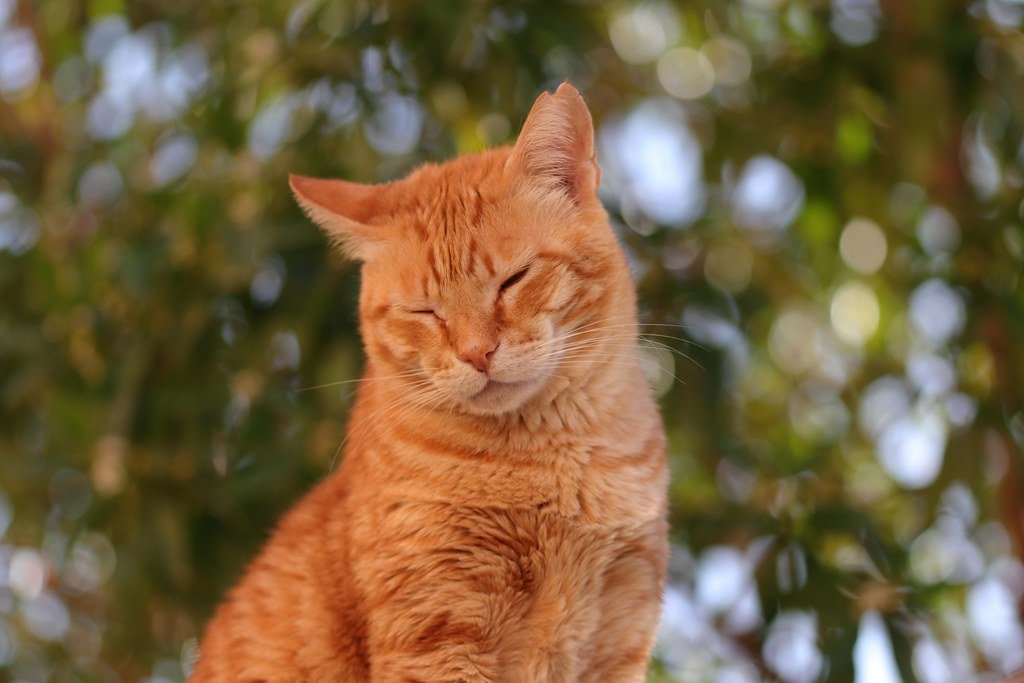The Mysterious Gaze That Reads Your Soul

Your cat isn’t just staring at you randomly – they’re actually conducting a complex analysis of your facial features. Those piercing eyes are scanning for micro-expressions, eyebrow movements, and mouth positions that reveal your emotional state. Scientists have discovered that cats can distinguish between different human facial expressions with remarkable accuracy, especially when it comes to detecting anger, happiness, and fear. It’s like having a furry emotion detector sitting on your windowsill, constantly monitoring your mood. This ability developed over thousands of years of domestication, allowing cats to better understand their human companions and respond accordingly.
Your Smile Triggers Their Hunting Instincts

When you flash a big grin at your feline friend, something fascinating happens in their brain. Cats interpret human smiles differently than we might expect – they often see bared teeth as a potential threat signal, similar to how aggressive animals display their fangs. However, domesticated cats have learned to associate human smiles with positive interactions and treats. Your cat might approach you more cautiously when you’re beaming widely, but they’ve also learned that smiling humans are more likely to provide food or attention. This creates an interesting contradiction where your cat both recognizes the smile as friendly behavior while still maintaining some instinctual wariness.
Frowning Makes Them Think You’re Plotting

A furrowed brow sends clear signals to your cat that something is amiss in your world. Cats are experts at reading the subtle tension in human facial muscles, and they can detect when you’re concentrating, worried, or upset. When you frown, your cat might interpret this as a sign that you’re in problem-solving mode – much like when they’re stalking prey or figuring out how to reach that bird outside the window. This expression often triggers their own alert state, making them more attentive to their surroundings. Some cats will even approach their frowning humans as if offering comfort, having learned that this facial expression often precedes cuddle time.
Wide Eyes Equal Immediate Attention

Your cat pays special attention when your eyes widen, whether from surprise, fear, or excitement. In the feline world, wide eyes can signal either alertness to danger or intense focus on something interesting. Cats have learned to read this human expression as a cue that something important is happening in their environment. When you open your eyes wide while looking at your cat, they often interpret this as intense interest or the precursor to play time. This expression can trigger their own excitement response, causing them to puff up their tail or assume a playful hunting stance.
Squinting Creates Instant Cat Trust

The slow blink or squint is like speaking fluent cat language with your face. When you partially close your eyes while looking at your cat, you’re essentially telling them that you’re relaxed and non-threatening. Cats interpret this expression as a sign of trust and affection – it’s their equivalent of a kiss. Many cats will return the slow blink, creating a silent conversation of mutual respect and love. This facial expression is so powerful in cat communication that it can help calm anxious cats and strengthen the bond between human and feline. It’s amazing how something as simple as squinting can translate into “I love you” in cat language.
Raised Eyebrows Signal Play Time

When your eyebrows shoot up in surprise or excitement, your cat takes notice immediately. This expression often accompanies sudden movements or sounds that indicate something interesting is about to happen. Cats have learned to associate raised human eyebrows with the beginning of interactive play sessions or the arrival of something exciting like treats or toys. The quick eyebrow flash that humans use unconsciously when greeting each other is something cats have learned to recognize as a positive social signal. Your cat might even respond with their own version of raised eyebrows – those little whisker movements that show they’re engaged and ready for action.
Mouth Movements Reveal Your Intentions

Your cat is constantly monitoring the shape and movement of your mouth for clues about your intentions. When you purse your lips to make kissing sounds, most cats recognize this as an invitation for affection or attention. The way you move your mouth when talking to them versus talking to other humans creates different responses – they know when you’re addressing them directly. Cats also pay attention to whether your mouth is open or closed, as this can indicate breathing patterns that reveal stress, excitement, or relaxation. It’s like they’re reading your lips, but instead of words, they’re interpreting emotional states and upcoming actions.
Nostril Flares Don’t Go Unnoticed

Even the subtle flaring of your nostrils when you’re angry or excited gets picked up by your observant cat. This micro-expression is something humans rarely notice in each other, but cats are incredibly sensitive to these tiny facial changes. Flared nostrils often accompany other stress signals, and cats have learned to read this as a sign that their human is experiencing strong emotions. When they detect this expression, many cats will either give you space or approach cautiously to assess the situation. It’s remarkable how these small facial movements can communicate so much information to our feline companions.
Tension in Your Jaw Speaks Volumes

Cats are surprisingly good at detecting when you’re clenching your jaw or holding tension in your face. This physical manifestation of stress or concentration doesn’t go unnoticed by your feline observer. When you’re grinding your teeth or tightening your jaw muscles, your cat can sense the change in your facial structure and overall energy. Many cats respond to this tension by either becoming more alert themselves or attempting to provide comfort through purring or gentle head bumps. They’ve learned that jaw tension often precedes changes in human behavior, making them excellent predictors of our moods and actions.
Forehead Wrinkles Tell Stories

The lines that appear on your forehead when you’re thinking hard or feeling stressed are like an open book to your cat. These wrinkles change the entire landscape of your face, and cats are masters at reading these topographical changes. When your forehead is smooth and relaxed, your cat interprets this as a sign that you’re content and approachable. However, when those worry lines appear, they understand that you’re processing something complex or potentially stressful. Some cats seem to have a sixth sense about approaching their humans when those forehead wrinkles appear, as if they know you might need some feline therapy.
Cheek Positioning Reveals Happiness Levels

The way your cheeks lift when you smile or droop when you’re sad provides your cat with important emotional intelligence data. Cats notice how the muscles around your cheeks change your entire facial expression, and they’ve learned to associate these changes with different human moods. When your cheeks are lifted in a genuine smile, your cat often responds with increased affection and playfulness. Conversely, when your cheeks appear sunken or droopy, many cats become more gentle and attentive, as if they understand that you need extra comfort. This attention to cheek positioning shows just how sophisticated their reading of human emotions really is.
Ear Orientation Affects Their Response

While humans don’t have mobile ears like cats, the way you position your head and the angle at which you present your ears still matters to your feline friend. When you turn your ear toward your cat while they’re meowing, they recognize this as active listening – a sign of respect and attention in their world. The way you hold your head and orient your ears toward or away from them influences how they interpret your level of interest and engagement. Cats are incredibly social creatures despite their independent reputation, and they appreciate when their humans show signs of active listening through body language and ear positioning.
Chin Movements Signal Authority

The way you hold your chin – whether lifted in confidence or tucked in submission – sends clear messages to your cat about your current state of mind. A raised chin often accompanies confident behavior, which cats interpret as strong leadership and security. When your chin is tucked or lowered, cats may see this as a sign of uncertainty or submission, which can make them either more protective or more dominant depending on their personality. These subtle chin movements are part of the complex facial language that cats have learned to decode over thousands of years of living with humans. Your cat is essentially reading your confidence level through your chin position.
Lip Compressions Indicate Stress

When you press your lips together tightly, your cat recognizes this as a sign of internal tension or frustration. This expression rarely goes unnoticed because cats are incredibly sensitive to changes in their human’s emotional state. Compressed lips often accompany other stress signals, creating a complete picture that your cat can easily interpret. Many cats respond to this expression by either giving their human space or attempting to provide comfort through purring and gentle contact. It’s fascinating how such a small facial movement can communicate so much about your internal emotional state to your observant feline companion.
Temple Tension Triggers Protective Instincts

The muscles around your temples that tighten when you’re stressed or concentrating hard are another facial feature that cats monitor closely. When these muscles are tense, it changes the entire energy of your face and head, creating subtle shadows and lines that cats can detect. This tension often coincides with headaches or mental strain, and many cats seem to sense when their humans are experiencing discomfort in this area. Some cats will even gently head-butt or rub against their human’s temples, as if they’re trying to massage away the tension. This intuitive response shows how deeply cats understand and respond to our physical and emotional states.
Pupil Dilation Tells Emotional Tales

Your cat doesn’t just notice the size of your pupils – they understand what different pupil sizes mean in terms of your emotional and physical state. When your pupils are dilated from excitement, fear, or even certain medications, your cat picks up on this change immediately. Dilated pupils can indicate heightened arousal or stress, while constricted pupils might suggest concentration or calm focus. Cats use this information to adjust their own behavior accordingly, becoming more cautious around humans with dilated pupils or more relaxed around those with normal pupil sizes. This level of observation demonstrates the sophisticated way cats process and interpret human facial expressions.
Facial Asymmetry Catches Their Attention

When one side of your face expresses something different from the other – perhaps one eyebrow raised while the other remains neutral – your cat notices this asymmetry immediately. These uneven facial expressions often occur when humans are feeling conflicted or uncertain about something. Cats are experts at detecting these subtle inconsistencies in human expression, and they often respond by becoming more attentive or curious about what’s causing the mixed signals. This ability to read facial asymmetry shows just how detailed and nuanced their interpretation of human expressions really is. Your cat is essentially a living lie detector, picking up on the subtle ways our faces reveal our true feelings.
Did you ever realize your cat was such a skilled detective when it came to reading your face?
Hi, I’m Bola, a passionate writer and creative strategist with a knack for crafting compelling content that educates, inspires, and connects. Over the years, I’ve honed my skills across various writing fields, including content creation, copywriting, online course development, and video scriptwriting.
When I’m not at my desk, you’ll find me exploring new ideas, reading books, or brainstorming creative ways to solve challenges. I believe that words have the power to transform, and I’m here to help you leverage that power for success.
Thanks for stopping by, Keep coming to this website to checkout new articles form me. You’d always love it!






